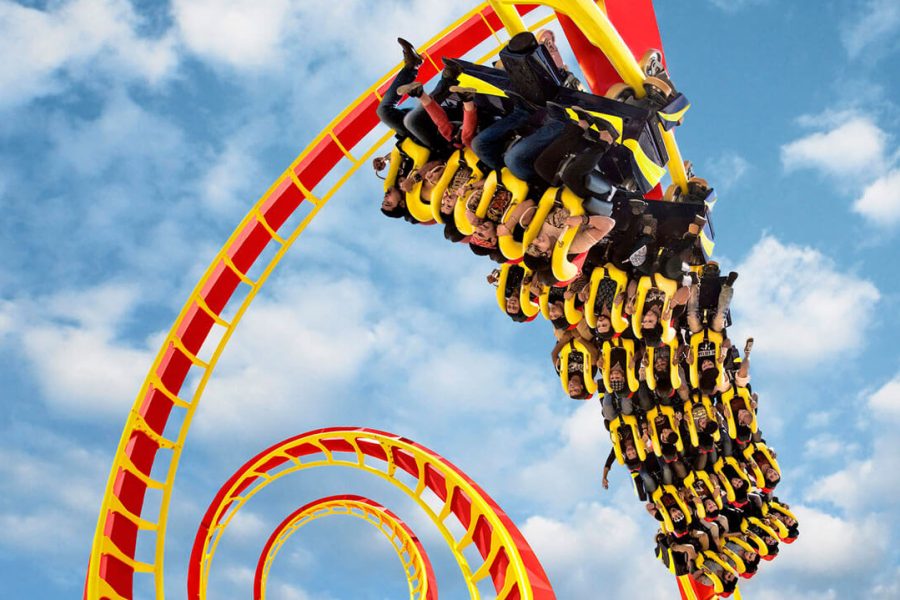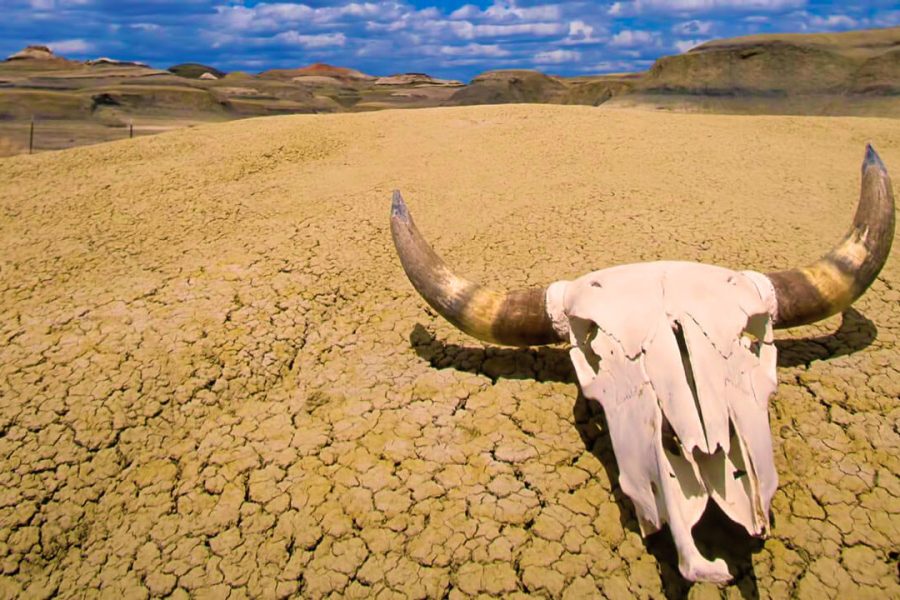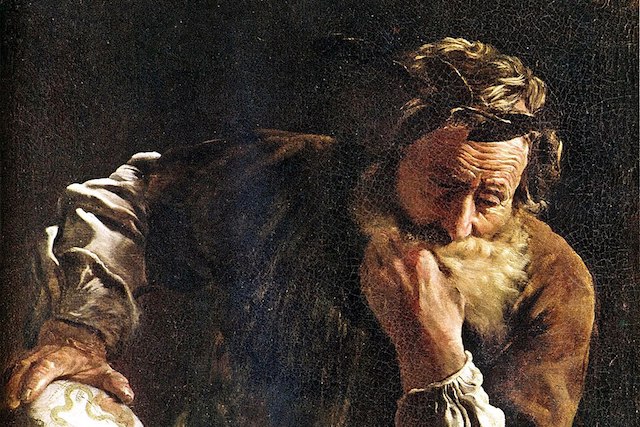Every month of every year, all over the world, cities, towns, and even tiny villages celebrate one festival or another for countless reasons. Some are religious, some celebrate the harvest, the passing of the seasons, local heroes, historical events, and so on. You can’t miss a good festival. But for all the easy-to-understand festivals that offer a good time and delicious food for those who attend, there are a few festivals that seem to exist primarily to sow discord, chaos, and danger to anyone who gets too close.
10. Baptism in Vale de Salgueiro
Christians celebrate the Feast of the Epiphany. In the US, it's what kicks off Carnival in New Orleans, and elsewhere, things like king cakes and fruitcakes are common. In the UK, Twelfth Night is the night before, and traditionally there's a log, sailing and, again, fruitcake. In the town of Vale de Salgueiro in Portugal, the celebrations include a strange twist.
If you go to this very small village of about 200 people, you will find that the locals encourage their children to smoke cigarettes on this day. And by children, we mean ages five years . Why would people celebrate Epiphany by making children smoke? Locals say it's a centuries-old tradition, but they have no other explanation either. It's completely unclear what it's supposed to represent or symbolize, especially since traditionally Epiphany celebrates the visit of the Magi to Christ as an infant and the revelation that he was God incarnate. Little of this concerns Marlborough.
Children in the village smoke for two days, and parents defend the practice because it is only two days and the children quickly become exhausted. At least one resident, which is 101 years old , claimed that they did it when she was a child, so they are really committed to it, even if no one knows why.
9. Exploding Hammer Festival in Mexico.
You can't argue that people don't love explosions, it's what drives the Fourth of July celebrations, as well as most Hollywood action movies. The Mexican city of San Juan de la Vega takes the love of the explosive festival to new heights with explosive-laced sledgehammers that go off every year on Fat Tuesday.
As the story goes, the city's founder was something of a Robin Hood. He got into a fight with some local landowners , as a result of which he stole their gold. Or, maybe they were bandits . Anyway, the locals celebrated his victory over the thieves by making exploding hammers, and why not?
In the past, the hammers were bound with homemade explosives such as fireworks, and then the hammers were slammed into I-beams or sheet metal. Old hammers that couldn't withstand the force would usually explode and send metal flying. Modern hammers are reinforced with rebar to withstand the blasts, but that doesn't stop chunks of metal from flying out and smashing into spectators and hammer wielders. In 2008, 50 bystanders were injured by shrapnel, but the celebrations have been going on for about 400 years, so a few scars from an explosion aren't likely to stop anyone.
8. Las Luminarias in Spain
The Spanish festival called Las Luminarias is meant to honor Saint Anthony Abbot, the patron saint of animals. And what better way to honor the memory of a pet lover than by running horses through fire? In a tradition that goes back centuries, running horses through raging fires is said to purify the animals by the fire.
Riders are said to take precautions such as, they trim horses, to prevent them from getting burned, but animal rights groups are still not big fans of the tradition. In total, about 100 horses There will be a ritual during the festival, followed later by drinking and dancing, as befits any good, fire-filled festival.
Despite assurances that horses do not get burned, others point out that because they are animals, they are unlikely to understand what is happening, and forcing animals that would normally run to escape danger to jump through fire is quite difficult for them . .
7. Arkansas Turkey Trot Festival.

The Turkey Trot Festival sounds about as innocent as it gets, right? Trotting turkeys make you think of plump little birds strolling carefree down the street. Technically, that's not the case with this real-life festival in Arkansas, or at least it wasn't until they decided to make it less terrifying a few years ago.
For 70 years, the small town of Yellville, Arkansas, has hosted a Thanksgiving festival dedicated to all things turkey. They even have a Miss Drumsticks to help celebrate. But for most of these 70 years, literally until 2017 , part of the tradition also involved loading planes with live turkeys and then throwing the birds, which, remember, cannot fly, out of the moving planes. Many died on impact, while others survived briefly with broken bones.
There was no trick or gimmick to what was happening, they were simply throwing birds to their deaths. It was animal cruelty, even though it wasn't technically violation of FAA regulations It wasn't until the media broke the story in 2017 that it finally came to an end, due to bad press rather than any particular compassion for turkey mayhem.
6. Japanese Wasp Festival

Among the chaotic news stories of the early 2020s was the story of giant Asian hornets heading to North America. The internet has always loved these creatures, as the giant stinging insect is a great kind of sci-fi monster come to life, plus videos of them raiding bee nests are pretty entertaining.
In Japan, where the hornets originate, there are also wasps that attract attention around Nagano and Gifu at a festival called Hebo Matsuri In the village of Kushihara, people come to eat wasp-based snacks made from wasp larvae and compete in wasp nest contests to see whose nest is the heaviest. If you have the money, you can even eat the larvae alive straight from the nest.
Visitors may get stung a couple of times while they are there, as unsurprisingly the wasps don't want you raiding their nests. You can also eat giant hornets there, although the live ones are not the kind you want to see, as their sting is very painful , and in some cases even fatal.
5. Festival of naked men

Not every festival has them 9000 nearly naked men , but the Konomiya Hadaka Matsuri does. The 1,250-year-old tradition requires men in loincloths to pray for good fortune. It's a little weird for now, but not dangerous. Things get more violent later, when the men compete to get good luck charms , of which there are two, by almost any means necessary. The scene is described as a "mosh pit" and involves jumping, tripping, climbing, etc. to try to reach them while they hang from above.
One person at the festival will be considered Lucky one or a man of God. Touching him is supposed to protect you from illness and misfortune. But when 9,000 people, doused with cold water, try to do this at once, the scene can become chaotic. Man in advance shave completely , and then chased completely naked as people passed on their bad luck to him. He then fled the city. Tourists are allowed to come and participate, and you can't have tattoos, nor be drunk , although some places seem to encourage sake drinking, so you may want to check local rules if you want to join in.
4. Spring Festival in Switzerland

Festivals that predict the weather are not necessarily a unique idea, in the US and Canada a groundhog is used every year to determine when winter will end. In Switzerland there is a similar tradition at a festival called Sechseläuten. The festival announces the beginning of spring and translates as “six o’clock bells ringing” to mark the extra hour of daylight that comes as winter gives way to spring.
At some point, the festival began to include something called the Böögg, a giant 11-foot-tall snowman that locals set on fire. The snowman sits on the fire with his head stuffed 140 sticks of dynamite , because how else can you celebrate the transition from winter to spring?
Once the fire is lit, people place bets on how long it will take for the fire to get strong enough for Bogg's head to explode. The sooner it does, the Spring will come soon , - this is the thinking. If it takes a long time, then the summer may be cold and accompanied by snowfall.
3. Takanakuy
IN "Seinfeld" there is an episode in which we learn that George's father has invented his own holiday around Christmas called Festivus, which involves feats of strength and airing of grievances. The people of the Peruvian Andes did one better to Mr. Costanza by creating a Christmas festival called Takanakuy .
The festival involves men and women, some wearing costumes and masks, some not, and the gist of it all is pretty simple - if anyone has wronged you during the year, you can settle the score here by beating the crap out of each other. friend . .
The goal of the fight is to start the new year with a clean slate and dispel old grudges. You start the fight with a hug and end it with one. But in the middle, you really beat your opponent into the dirt. Thousands of people show up, cheering on the fighters, who could be kids all the way from their grandparents, as they fight their way to a happy new year.
2. Yanshui Beehive Fireworks Festival
Despite its name, Taiwan's Yanshui Beehive Fireworks Festival has nothing to do with bees. The name is a metaphor for the chaos and perhaps intense and painful danger you're flirting with while you're here.
A religious holiday, its main claim to fame is that millions of fireworks, like a swarm of bees, are launched during the event. But they don't shoot into the sky, they shoot at you and everyone else in attendance.
It is assumed that the experience of chaos will bring good luck in the new year and will rid you of any bad influences. All you need to do is put on a helmet and protective clothing to try and avoid the inevitable burns as millions of little firecrackers explode around you and sparks rain down everywhere. Bruises from used cardboard tubes are not uncommon, and there is also the threat of fire or deafness and/or blindness from explosions near the ears and eyes.
1. Onbashira
Back in Japan again for a log riding festival that has claimed many lives in the past. The concept, known as Onbashira, is simple, yet confusing and terrifying. Participants must descend down the mountainside on gigantic 10 ton log , essentially on a felled tree.
In fact, the festival is religious character , and the massive logs were destined to become columns outside a Shinto shrine. People were crushed by logs , They drowned under them during transport by water, and when they were erected, some people fell from the tops. The last death was in 2016 However, death does not darken the holiday, since dying in this way is considered honorable.













Оставить Комментарий